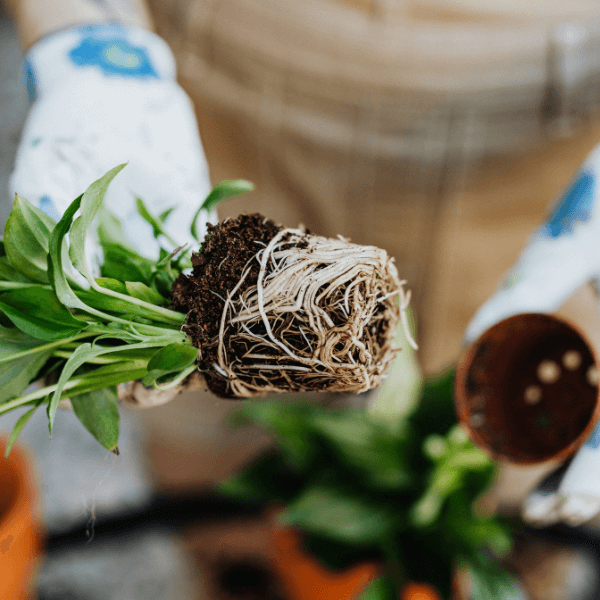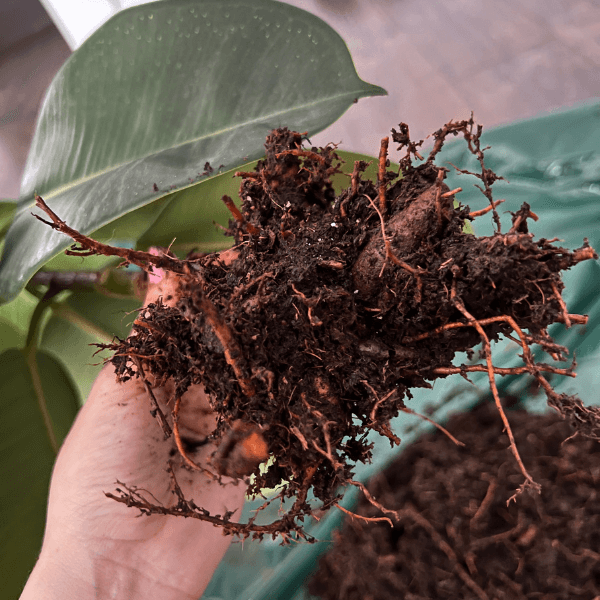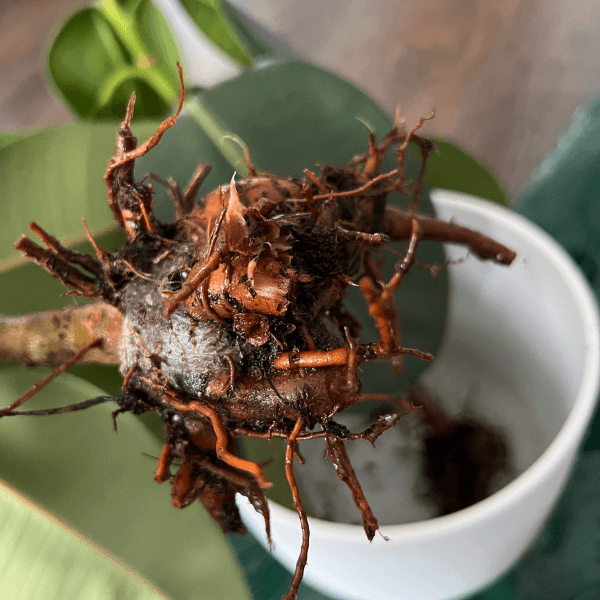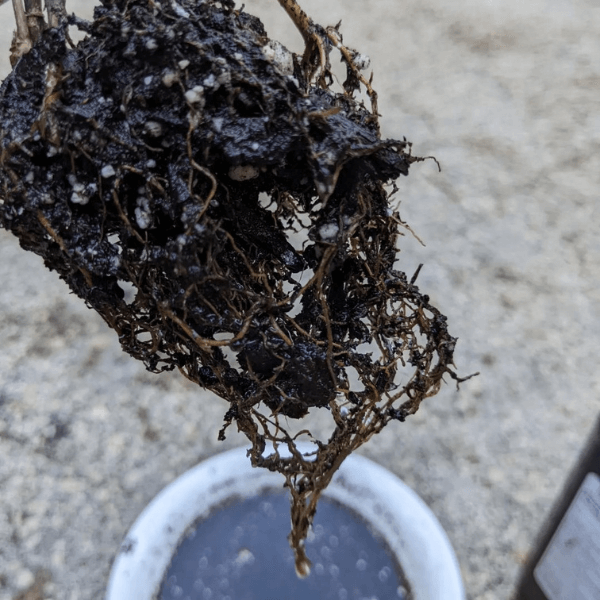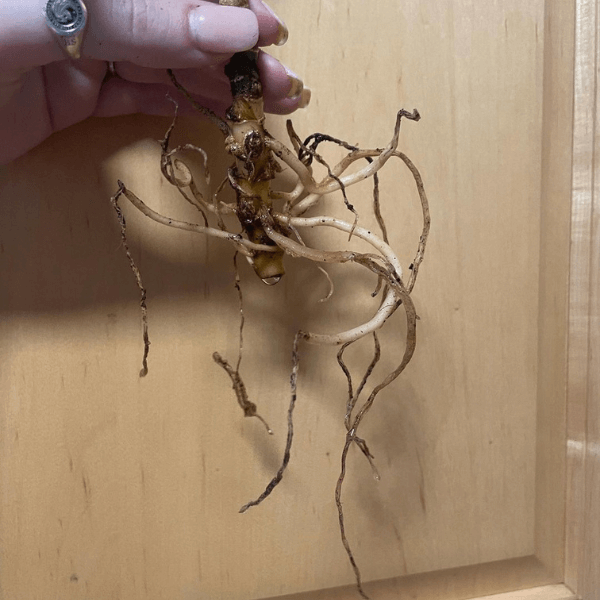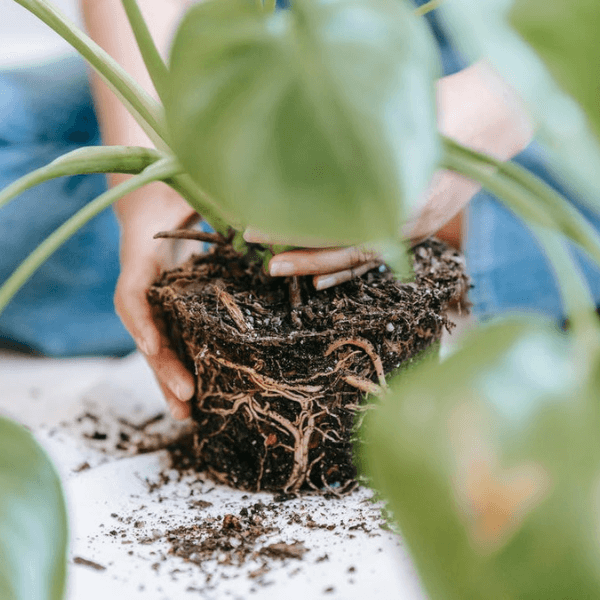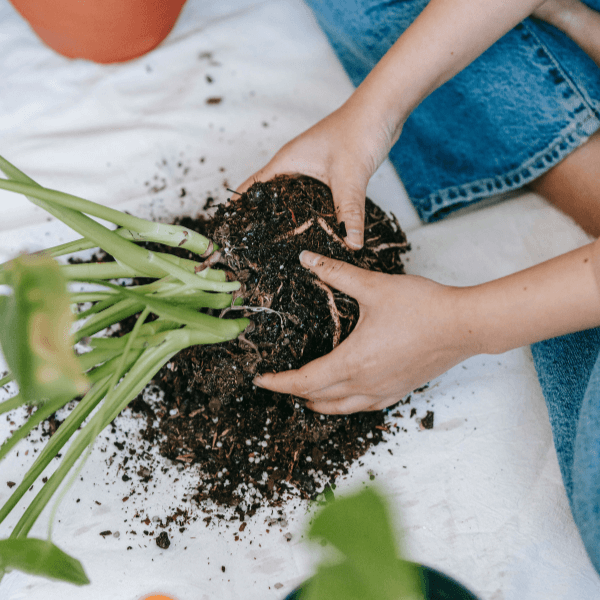There is no doubt that root rot is one of the most harmful things that can happen to your philodendrons, as it is one of the leading causes of death for these plants. Fortunately, this is an easy issue to prevent and treat if not too much damage has been done.
In most cases, it is caused by overwatering. But let’s be clear, overwatering itself does not cause rot. The excess moisture in the soil is what promotes the growth of root fungi.
Having too big of a pot and insufficient drainage can also lead to root rot. Excess water cannot escape from the pot and remains in the soil for too long. Rot quickly spreads in such a situation, however.
Prevention is the best treatment. It is often challenging to detect root rot until much damage has already occurred. The symptoms are not readily apparent in the early stages of root rot since the damage starts below ground. A great deal of damage is already done to the plant when the above-ground symptoms appear, and the plant is at risk of extinction.
You can detect root rot by looking for the following symptoms:
- soil is extremely wet
- droopy leaves
- stunted growth
- mushy stems
- wilting, yellow, distorted leaves
- the soil will smell rotten
- roots will look reddish-brown
- softened root tips
There is no doubt that root rot is one of the more challenging problems to resolve. In this article, I will teach you how to prevent root rot, identify root rot, find out what caused the problem, and treat it.
What is root rot?
Root rot is a relatively common houseplant disease usually caused by a bacterial or fungal infection. These pathogens thrive in wet soil and eventually cause a plant’s roots to suffocate. Roots can also rot when exposed to overly moist conditions for too long.
As the engine of a plant, the roots keep everything running and provide fuel for all the foliage you see above ground. The root system can’t function without oxygen. As the roots die, nutrient uptake is disabled, resulting in plant death. When they die, the rest of the plant does as well.
How does root rot develop?
Your current soil may contain dormant root rot pathogens. Whenever your philodendron sits in excess water for too long, rot-loving pathogens begin to thrive. When its population grows large enough, it will cause significant root damage to your plants.
How can you tell if your philodendron has root rot?
As I said, the first symptoms are under the soil and hard to see below the ground. In addition to inspecting the aboveground part of the plant, I recommend removing the plant from its pot and checking its roots and soil. Philodendron stem rot is a clear sign that something suspicious is going on.
Monitoring your plats every week is a good idea to see if there are any changes. This way, you can catch the problem before it gets worse. Plant problems can often occur very quickly and cause severe damage in a short amount of time.
You must begin the rescue operation if you discover very wet soil and brown and rotten roots. However, if the soil around your plant looks dry and the roots appear healthy, here’s how to find the cause of yellow leaves on your philodendron.
I have found that the only way to know is to pull the plant out of its pot and examine its roots. Easy step-by-step guide on how to analyze:
- Place an old mat or a plastic bag under the area where you will remove the plants. It will be easier to clean that mess that way.
- Pull the plant gently from its stem near the topsoil. Do not pull on leaves or weak parts of the plant.
- Gently remove the soil around the roots and try to clean the roots as much as possible.
- Wash extra soil from roots gently in room-temperature water and see what comes off. Remove all softened, brown, or black roots.
- Once you have done that, you can see if there are any savable roots. Healthy roots are firm and hard. Damaged roots look black, mushy, and soft. You can simply repot it in new soil if all the roots are healthy.
How can I treat root rotten Philodendron?
Your plant’s roots can be checked by taking it out of its pot. If they are brown, wet, and soggy, you must treat them immediately.
In the worst-case scenario, your plant will have no roots. Then it is a good idea to put philodendron into the water to re-root some healthy new roots.
The roots will begin to grow nods after a few weeks. After that, repot the plant into a light potting mix for aroids. When a plant seems less shaky, it’s a sign that it’s rooted well. When the wobbling stops, it’s a sign that the roots are becoming more assertive.
Here is an easy video tutorial on how to identify and treat root rot damaged philodendron:
How to prevent root rot?
The best treatment is prevention. I recommend monitoring all your plants at least once a month, but it is better once a week. It just means take a quick look at your plants and see if anything unusual catches your eye.
You can protect your philodendron from root rot by providing the plant with the previous points. If not, there is a possibility that root rot will soon be a problem for your philodendron.
Root rot on philodendron can be a seriously annoying problem with unpleasant consequences. Luckily it is easy to prevent and easily treatable if detected in time. Don’t overwater your philodendron; that’s the most important thing.
Share your good tips for preventing or treating root rot with me. Just write your thought below in the comments. Together we can make this article even better.

